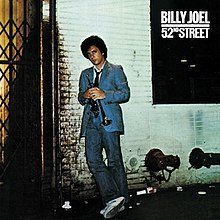
True Colors is the second studio album by American singer Cyndi Lauper, released on September 16, 1986, by Portrait Records. The album spawned several commercially successful singles as "True Colors", "Change of Heart", and "What's Going On" reached the top 20 of the Billboard Hot 100, with the first two charting within the top five. The album was produced by Lauper herself together with Lennie Petze.
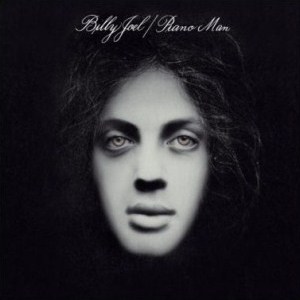
Piano Man is the second studio album by American recording artist Billy Joel, released on November 14, 1973, by Columbia Records. The album emerged from legal difficulties with Joel's former label, Family Productions, and ultimately became his first breakthrough album.

Foot Loose & Fancy Free is the eighth studio album by Rod Stewart, released in November 1977 on Riva Records in the UK and Warner Bros in the US.
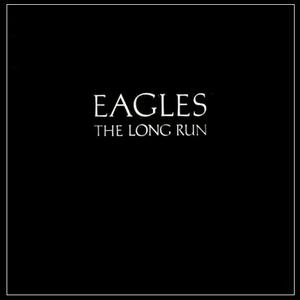
The Long Run is the sixth studio album by American rock group the Eagles. It was released in 1979 by Asylum Records in the United States and the United Kingdom. This was the first Eagles album to feature bassist Timothy B. Schmit, who had replaced founding member Randy Meisner, and the last full studio album to feature Don Felder before his termination from the band in 2001.
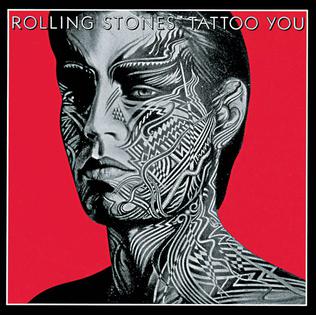
Tattoo You is a studio album by the English rock band the Rolling Stones, released on 24 August 1981 by Rolling Stones Records. The album is mostly composed of studio outtakes recorded during the 1970s, and contains one of the band's most well-known songs, "Start Me Up", which hit number two on the US Billboard singles charts.
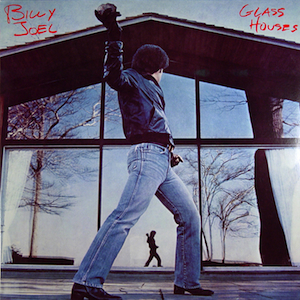
Glass Houses is the seventh studio album by American singer-songwriter Billy Joel, released on March 12, 1980. It features Joel's first song to peak at No. 1 on Billboard's Pop Singles chart, "It's Still Rock and Roll to Me". The album itself topped the Pop Albums chart for six weeks and was ranked No. 4 on Billboard's 1980 year-end album chart. The album is the 41st best selling album of the 1980s, with sales of 7.1 million copies in the U.S. alone. In 1981, Joel won a Grammy Award for "Best Male Rock Vocal Performance" for his work on Glass Houses. According to music critic Stephen Thomas Erlewine, the album featured "a harder-edged sound" compared to Joel's other work, in response to the punk and new wave movements. This was also the final studio album to feature the original incarnation of the Billy Joel Band, augmented by new lead guitarist David Brown. Multi-instrumentalist Cannata left the band just before the sessions began for Joel's next studio album, 1982's The Nylon Curtain.

The Bridge is the tenth studio album by American singer-songwriter Billy Joel, released on July 25, 1986. It was Joel's last studio album produced by Phil Ramone as well as the last to feature Joel's long-time bassist Doug Stegmeyer and rhythm guitarist Russell Javors. The album yielded several successful singles, including "A Matter of Trust", "Modern Woman", and "This Is the Time".
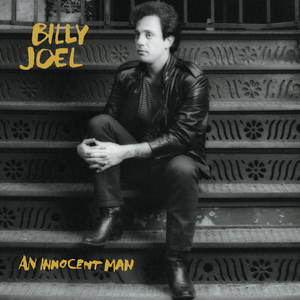
An Innocent Man is the ninth studio album by American singer-songwriter Billy Joel, released on August 8, 1983. The concept album is a tribute to the American popular music of Joel's adolescent years with Joel paying homage to a number of different and popular American musical styles from the late 1950s and early 1960s, most notably doo-wop and soul music. The album cover artwork was taken on the front steps of 142 Mercer Street, just north of the intersection of Mercer and Prince Street in the SoHo neighborhood of Manhattan, New York City.

Storm Front is the eleventh studio album by American singer-songwriter Billy Joel, released on October 17, 1989. It was Joel's third album to reach No. 1 in the U.S. and features "We Didn't Start the Fire", a fast-paced song that cataloged a list of historical events, trends, and cultural icons from 1949 until 1989, which was Joel's third Billboard No. 1 hit.

River of Dreams is the twelfth studio album by American singer-songwriter Billy Joel, released on August 10, 1993. River of Dreams presented a more serious tone than found in Joel's previous albums, dealing with issues such as trust and long-lasting love. It was rumored that the themes of trust and betrayal, particularly certain lyrics from the songs "A Minor Variation" and "The Great Wall of China", stem from Joel's legal disputes with his former manager and ex-brother-in-law, Frank Weber, who reportedly embezzled millions of dollars from Joel and used dubious accounting practices to cover it up.

Emotional Rescue is a studio album by English rock band the Rolling Stones, released on 23 June 1980 by Rolling Stones Records. Following the success of their previous album, Some Girls, their biggest hit to date, the Rolling Stones returned to the studio in early 1979 to start writing and recording its follow-up. Full-time members Mick Jagger (vocals), Keith Richards (guitar), Ronnie Wood (guitar), Bill Wyman (bass) and Charlie Watts (drums) were joined by frequent collaborators Ian Stewart (keyboards), Nicky Hopkins (keyboards), Bobby Keys (saxophone) and Sugar Blue (harmonica).

Minute by Minute is the eighth studio album by American rock band the Doobie Brothers, released on December 1, 1978, by Warner Bros. Records. It was their last album to include members John Hartman and Jeff "Skunk" Baxter.

Caribou is the eighth studio album by English musician Elton John, released on 24 June 1974 by MCA Records in the US and on 28 June by DJM Records in the UK. It was his fourth chart-topping album in the United States and his third in the United Kingdom. The album contains the singles "Don't Let the Sun Go Down on Me", which reached number 16 in the UK Singles Chart and number two in the US, and "The Bitch Is Back", which reached number 15 in the UK and number four in the US. Both singles reached number one in Canada on the RPM 100 national Top Singles Chart, as did the album itself.

Rock of the Westies is the tenth studio album by English musician Elton John, released on 24 October 1975. The title is a spoonerism on the phrase "West of the Rockies", the album having been recorded at Caribou Ranch in the Rocky Mountains of Colorado.

A Single Man is the twelfth studio album by English musician Elton John. Released in 1978, it is the first album for which Gary Osborne replaced Bernie Taupin as lyricist. It is also the first of two John albums that, on the original cut, have no tracks co-written by Taupin.

The Dream of the Blue Turtles is the debut solo album by English musician Sting, released in June 1985. The album reached number three on the UK Albums Chart and number two on the US Billboard 200.

Marathon is the eleventh studio album by Santana. This marked the beginning of the group's commercial slide, in spite of having the Top 40 hit "You Know That I Love You".
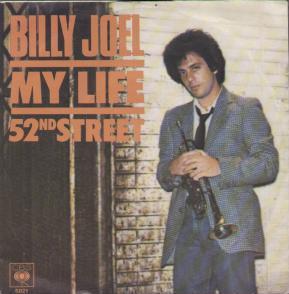
"My Life" is a song by Billy Joel that first appeared on his 1978 album 52nd Street. A single version was released in the fall of 1978 and reached No. 2 on the U.S. adult contemporary chart. Early the next year, it peaked at No. 3 on the Billboard Hot 100.
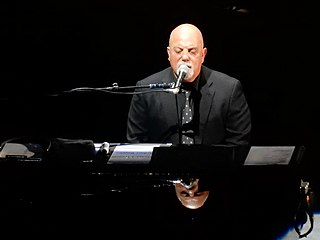
This is the discography of American singer-songwriter Billy Joel. He has released 13 studio albums, seven live albums, 18 compilation albums, 10 video albums, 82 singles, three promotional singles and 45 music videos. Throughout his career, he has sold over 150 million records worldwide, making him one of the best-selling music artists in history. According to Recording Industry Association of America, Joel has sold 85 million certified albums in the United States, making him the 4th best-selling solo artist of all time. Billboard ranked him as the 9th Greatest male soloist of all time.

"Honesty" is a song by American singer-songwriter Billy Joel, released by Columbia Records as the third US single from his sixth studio album 52nd Street (1978) in 1979. "Honesty" was solely written by Joel, while production was handled by Phil Ramone. The song appears on the Dutch and Japanese editions of Greatest Hits Volume 2, replacing "Don't Ask Me Why" (1980).
